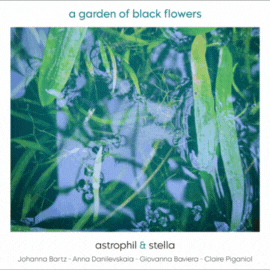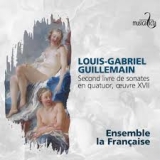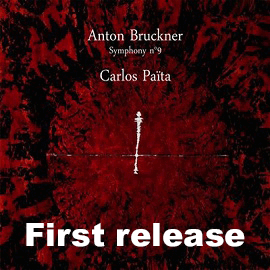 Louis-Gabriel Guillemain: Second livre de sonates en quatuor ou Conversationes galantes et amusantes ...; Ensemble La Française (Aude Lestienne; Flöte und Leitung, Shiho Ono, Violine, Myriam Ropars, Bassviole, Jean-Baptiste Valfré, Cello, Kazuya Gunji, Cembalo); 1 CD Musica ficta MF8034; Aufnahme 07/2020, Veröffentlichung 10/2020 (71'07) – Rezension von Uwe Krusch
Louis-Gabriel Guillemain: Second livre de sonates en quatuor ou Conversationes galantes et amusantes ...; Ensemble La Française (Aude Lestienne; Flöte und Leitung, Shiho Ono, Violine, Myriam Ropars, Bassviole, Jean-Baptiste Valfré, Cello, Kazuya Gunji, Cembalo); 1 CD Musica ficta MF8034; Aufnahme 07/2020, Veröffentlichung 10/2020 (71'07) – Rezension von Uwe Krusch
Die hier eingespielten sechs Quartettsonaten der Werknummer XVII sind einige Jahre nach dem Tod von Bach und Händel entstanden und gehören damit in die späte Phase des Barock. Das zeigen sie durch die Affekte, die Kontraste und die Bewegungselemente dieser Epoche. Doch darüber hinaus deutet ihre Phantasie, Zartheit und Raffinesse auch die Ausprägung des Rokoko an. Zu Lebzeiten hochgeachtet als Geiger und auch als Musiker allgemein, findet Guillemain heute kaum Beachtung. Das spiegelt sich auch darin, dass dieser Zyklus hier erstmal vollständig eingespielt wurde.
Aus seinen Cembalozyklus mit Violinbegleitung op. 13 umgeformt, setzen die Stücke Flöte, Violine, Viola und Continuo als vier gleichberechtigte Stimmen nebeneinander. Italienisch in ihrer Dreisätzigkeit überzeugt die Musik mit erfindungsreicher, zwischen den Instrumenten verteilter thematischer Gestaltung und abwechslungsreicher und komplexer Rhythmik, was sie wiederum sehr französisch macht.
Das Ensemble La Française widmet sich lustvoll diesen Werken. Die Flötistin und Leiterin Aude Lestienne agiert ebenso sicher wie stilvoll, genau wie Shiho Ono auf der Violine. In den tieferen Registern sind mit der dritten Melodiestimme Myriam Ropars auf der Bassgambe und im Continuo Jean-Baptiste Valfré am Cello sowie am Cembalo Kazuya Gunji zu vernehmen, die hier ebenso involviert sind wie die höheren Stimmlagen. Sie durchdringen insbesondere die rhythmischen Verstrickungen, so dass die verschachtelte Struktur verständlich wird. Hier zeigt sich die ungewöhnliche Kompositionsweise am stärksten und am Französischsten.
The six quartet sonatas op. XVII recorded here were written a few years after the death of Bach and Handel and thus belong to the late phase of the Baroque. They show this through the affects, the contrasts and the movement that are typical of this epoch. But their imagination, delicacy and refinement also refer to the Rococo period. During his lifetime highly respected as a violinist and also as a musician in general, Guillemain today receives little attention. No wonder, that this is the first complete recording of this cycle.
Adapted from his harpsichord cycle with violin accompaniment op. 13, the works place flute, violin, viola and continuo next to each other as four equal voices. Italian in its three-movement form, the music convinces with inventive thematic arrangements and varied and complex rhythms, which in turn makes the music very French.
The ensemble La Française convinces with good performances. The flautist and leader Aude Lestienne is playing as confidently and stylishly as Shiho Ono on the violin. In the lower registers, Myriam Ropar with the third melody part on the bass viol, Jean-Baptiste Valfré on the cello and Kazuya Gunji on the harpsichord, are just as involved as the higher voices. In particular, their playing makes the structure very clear. This is where the unusual compositional style is most evident and most French.

























